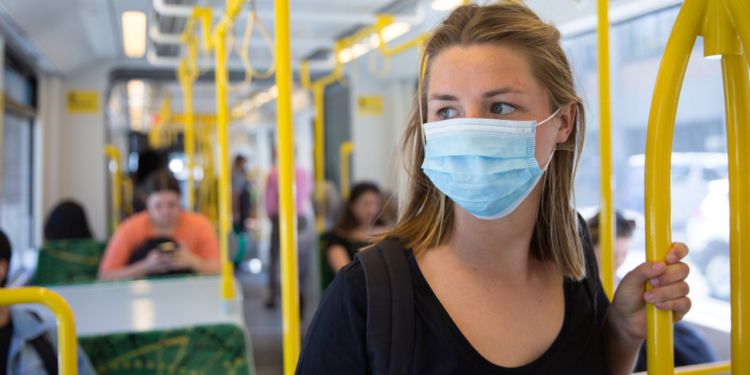
During the Covid-19 pandemic, Australia enforced strict lockdowns as well as closing its borders to most overseas visitors. These restrictions gradually lifted as vaccination roll-outs occurred and Covid-19 response measures were refined. Until recently, travel to Australia also required passengers to wear a mask, show proof of negative Covid-19 tests and provide vaccination certificates, however, as of March 2023, these measures have now been lifted, and entry and exit from Australia has relaxed to pre-pandemic levels.
What are the current border regulations for entering Australia?
As of March 2023, Australia no longer requires any passenger to provide evidence of vaccination or a negative test result. The usual visa and traveler requirements remain in place, but there are no longer any Covid-19 restrictions in place for those arriving in Australia.
The post-pandemic labor market in Australia
The COVID-19 crisis had a significant impact on the Australian labor market. In June 2020, the unemployment rate reached a peak of 7.4% amid the second wave of Coronavirus infections. However, as of 2022, joblessness fell to near 50-year lows, triggered by the rebounding economy after Covid restrictions were eased, combined with fewer overseas students (and other short-term visa holders). This means Australia is currently on the lookout for workers and there is a push to allow more overseas workers into the country to deal with labor shortages. However, be aware that visa backlogs that accrued during the pandemic are impacting visa processing times.
The response of the healthcare system in Australia
The Australian healthcare system functioned reasonably well during the pandemic, with a coordinated response from federal, state, and territory governments to control the spread of COVID-19.
As the pandemic progressed, the Australian government used a range of measures to protect the health of its citizens, including the expansion of telehealth services, providing free COVID-19 testing and vaccines, and enforcing mandatory quarantine for international arrivals. Telehealth services were expanded, allowing patients to consult with doctors and other healthcare professionals via phone or video conferencing to reduce the risk of infection. The use of masks became widespread in some areas during outbreaks, and in some states, they were made mandatory.
Ongoing changes to be aware of in the Australian healthcare system include continued efforts to increase vaccination rates, more widespread use of masks, the use of digital and telehealth tools to improve healthcare access, and the prevalence of RAT tests, masks, and distancing measures when experiencing cold and flu symptoms.
Post-pandemic changes at universities and schools in Australia
Some educational changes triggered by the Covid-19 pandemic are likely to persist in the post-pandemic world. These include “hybrid learning”, which is the combination of online and in-person teaching. During the pandemic, most universities and schools invested in online learning platforms, which were critical during periods of lockdown. Now, as students and staff adapt to the benefits of hybrid learning, it's likely to remain embedded in the Australian educational system.
The pandemic has also led to more flexible working arrangements for staff in universities and schools, with remote working becoming a more popular option for staff. The pandemic highlighted the importance of having a robust digital infrastructure to support online learning and remote working and organizations which might have neglected aspects of their curriculum were forced to rapidly improve digital infrastructure, upgrade their internet connection and get on board with cloud-based storage systems. This investment is likely to continue in the post-pandemic period.
The general culture of staying home when sick rather than soldiering on has now taken root, and you are likely to upset your colleagues or fellow students if you show up to class with a sniffle or a cough rather than being lauded for it.
How is the Australian real estate market following the crisis?
Despite knockbacks during the pandemic, the Australian real estate market has bounced back post-COVID-19, and there is once more very high demand for residential properties across the country. Buyers are seeking more space and outdoor areas, with regional and coastal areas becoming particularly popular. Online property sales and virtual tours have become more prevalent, allowing buyers to view properties remotely – which means house hunting or researching the market from overseas just got a little bit easier. The Australian rental market has faced some challenges, but it, too, is showing signs of recovery. Incentives for first-home buyers and other government measures have also helped to support the market. Overall, the Australian real estate market has been quite resilient and is continuing to perform strongly in the post-pandemic period.
Cost of living in Australia
The cost of living crisis can be attributed to a range of factors, with the COVID-19 pandemic playing a significant role in some aspects. The pandemic has caused disruptions to global supply chains, which has led to shortages and price increases for some goods and services. Additionally, lockdowns and restrictions have caused economic slowdowns, which have impacted employment and wages for many people.
Two years later, the whole world is facing a cost of living crisis, and Australia is no exception. In March 2023, new data showed that grocery bills in Australia had reached record highs, with Australians paying thousands more for groceries than they were a year ago, with the average household spending an additional $1,924 per year. This increase in grocery bills is putting a strain on household budgets as people try to balance rising costs with their daily expenses. The cost of living crisis is a global issue, and governments and organizations are working to address it, but it remains a significant challenge for individuals and families around the world.
Lifestyle and behavior changes in Australia
The COVID-19 pandemic has led to major changes in lifestyle habits across Australia. Hand sanitizing, wearing masks, and social distancing have become routine practices, thanks to the government's extensive awareness campaigns. Many employees continue to work from home, and Australians are going out less, according to a survey by the Australian Institute for Family Studies. Restaurants, bars, and cafes are only accepting small groups, and more people are opting for indoor activities such as exercising, gardening, and watching movies. A study by Kantar found that most Australians are avoiding public places, with many canceling domestic travel plans. The survey also revealed that 60% of respondents are socializing less, and 40% are not inviting people to their homes. The pandemic has fundamentally altered the way Australians live, work, and interact with each other.
We do our best to provide accurate and up to date information. However, if you have noticed any inaccuracies in this article, please let us know in the comments section below.











